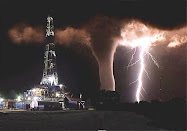I remember being impressed about the importance of power by
an input-output model of the US economy in my college economics class. A country may be rich in labor and raw
materials, but without that power input, growth is a struggle.
In the United States, one economist estimated that each
household has the effective assistance of 14 people’s labor. That is because of the washer and
dryer, dishwasher, refrigerator, lawnmower, autos, power tools, fans, pumps,
etc. We don’t have to haul water
from the village well any more. We
don’t have to keep live chickens in the yard in order to eat chicken unless we
want to raise chickens.
 Power is often described in categories as renewable or
non-renewable. I prefer to
use categories such as transportable, compact and universal. For example, wind power is not compact
enough for powering land transport unless it can be stored as some other
secondary form but is suitable for ships, while gasoline is a primary and
compact source of automobile power.
Sunlight in larger arrays is quite useful for some industrial
processes. However, electricity is by far the
cheapest and most transportable form of energy. It is 1000 times less expensive to send a megawatt of power
over utility lines than the equivalent methane through the next best medium, a
gas pipeline. Even with the
inevitable losses, it is cheaper to convert many power sources, such as solar
arrays and wind farms, to electricity for transport than to convert them into,
say, hydrogen split from water, then transmitted by pipeline.
Power is often described in categories as renewable or
non-renewable. I prefer to
use categories such as transportable, compact and universal. For example, wind power is not compact
enough for powering land transport unless it can be stored as some other
secondary form but is suitable for ships, while gasoline is a primary and
compact source of automobile power.
Sunlight in larger arrays is quite useful for some industrial
processes. However, electricity is by far the
cheapest and most transportable form of energy. It is 1000 times less expensive to send a megawatt of power
over utility lines than the equivalent methane through the next best medium, a
gas pipeline. Even with the
inevitable losses, it is cheaper to convert many power sources, such as solar
arrays and wind farms, to electricity for transport than to convert them into,
say, hydrogen split from water, then transmitted by pipeline.
For the next two or more decades, developed nations will
depend primarily on fossil fuels, derived from petroleum and coal, for electric
power. In the US, and I believe in
China as well, the largest electric generation source is coal fired
boilers. Next in importance is
nuclear and natural gas, in that order.
Renewable sources remain a tiny wedge of the energy pie diagram. They are cost effective only in special
locations such as those designated as Wind Power Class 7, where the wind speed
averages about 10 meters per second, or the Mojave Desert where there is over
300 days of full sun per year.
Without subsidies, other wind and solar locations would not exist.
I like ground source heat pumps, geothermal energy and low
speed hydropower sources, but they are even more dependent on special locations
than wind and solar.
The lesson is that we ought to generate electricity from
whatever source is local and convenient and tie them all together with a good
electric grid, perhaps using DC instead of AC power to avoid phasing issues.
We look forward to fusion power, but for the last 50 years
since the first Tokamak, commercial fusion has remained 50 years away. It is still 50 years away.
So we are stuck with fossil fuels for the near term, perhaps
most of our lifetimes, or we could choose a less rosy, perhaps dismal, economic
future.


No comments:
Post a Comment